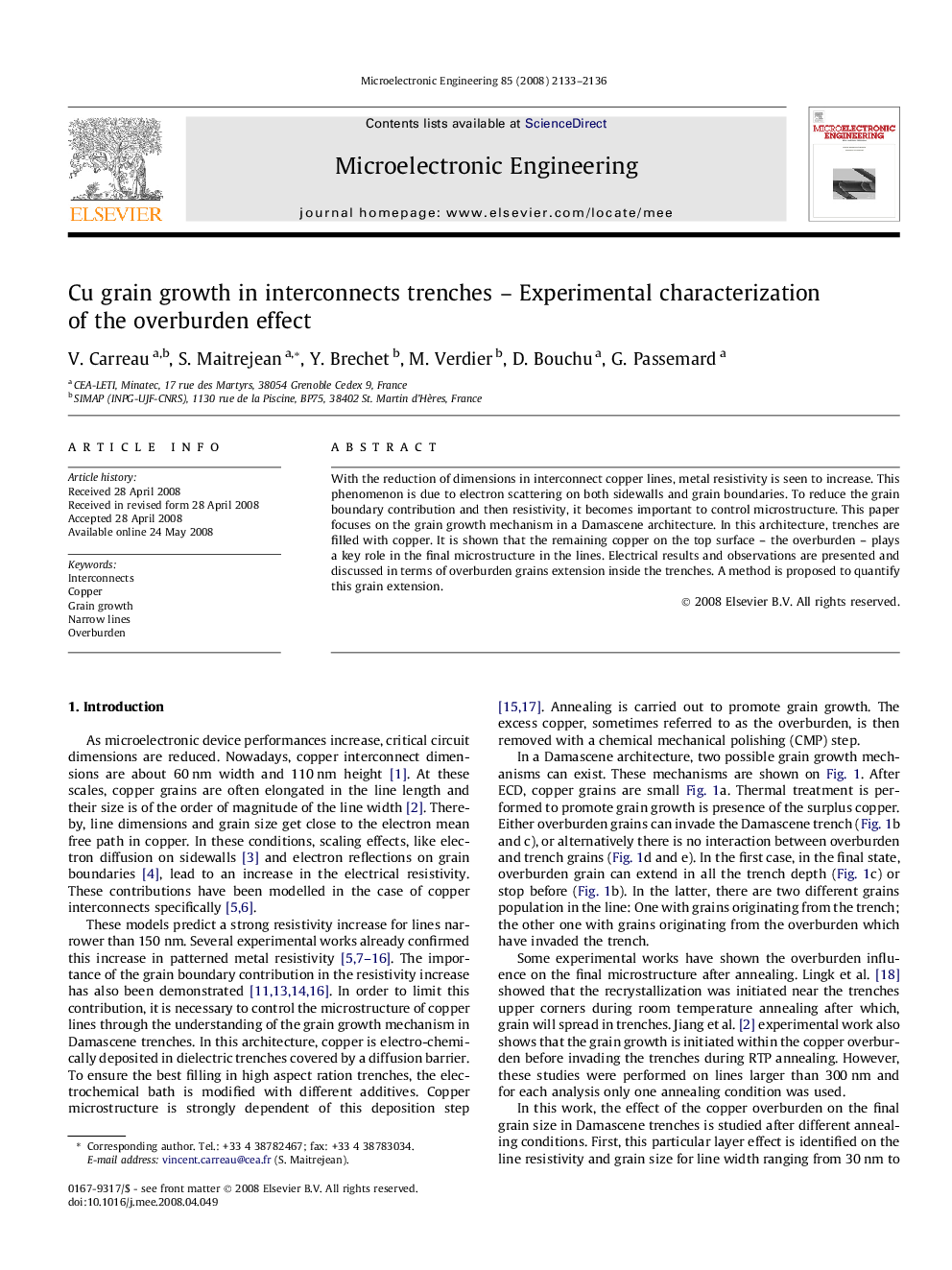| Article ID | Journal | Published Year | Pages | File Type |
|---|---|---|---|---|
| 540700 | Microelectronic Engineering | 2008 | 4 Pages |
Abstract
With the reduction of dimensions in interconnect copper lines, metal resistivity is seen to increase. This phenomenon is due to electron scattering on both sidewalls and grain boundaries. To reduce the grain boundary contribution and then resistivity, it becomes important to control microstructure. This paper focuses on the grain growth mechanism in a Damascene architecture. In this architecture, trenches are filled with copper. It is shown that the remaining copper on the top surface – the overburden – plays a key role in the final microstructure in the lines. Electrical results and observations are presented and discussed in terms of overburden grains extension inside the trenches. A method is proposed to quantify this grain extension.
Related Topics
Physical Sciences and Engineering
Computer Science
Hardware and Architecture
Authors
V. Carreau, S. Maitrejean, Y. Brechet, M. Verdier, D. Bouchu, G. Passemard,
